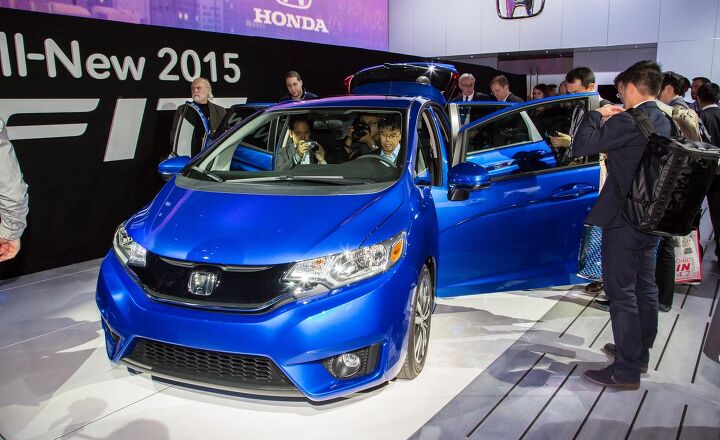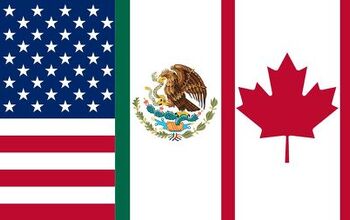Mexico Besting Japan, Canada In Auto Exports To The U.S.
Mexico’s auto industry is set to ship more product north to the United States than Japan and Canada by the end of 2015, in part due to the effects the North American Free Trade Agreement has had on the country since its signing two decades ago.
USA Today reports that with operations at Honda’s new $800 million plant in Guanajuato now online, the 200,000 Fits destined annually for the U.S. will push total Mexican exports to 1.7 million units this year, just 200,000 more than Japan’s exports from their home market. Mazda’s newest plant 25 miles away, when open this week, will add 230,000 units annually to the total, pushing Mexico past Canada by the end of 2015 to become the No. 1 exporter to the U.S.
At the time of NAFTA’s signing, the auto industry in Mexico produced 6 percent of the total output in North America. Twenty years later, that figure is now 19 percent, with 3 million units leaving the factory floor. Total valuation of the nation’s exports surged to $70.6 billion from $40 billion in 2007. The industry is now Mexico’s primary source of foreign currency, surpassing oil exports and remittances from migrant labor along the way.
This growth is driven by low wages — $16/day on average for Mexico’s 580,000 auto workers — which critics attribute to maintaining Mexico’s poverty rate between 40 percent and 50 percent two decades on. Meanwhile, the nation hasn’t fared any better as a whole, with overall economic growth at 1.1 percent in 2013, the worst rate of growth since the beginning of the Great Recession.
For Eduardo Solis, president of the Mexican Automotive Industry Association, the boom is about more than low wages, citing a new generation of local engineers and increases in automotive research as positive outcomes:
It’s not only about lower salaries. That’s short-sighted. It is a component of a larger equation that has to do with the expertise we are developing.
Aside from NAFTA opening the floodgates, the lack of tariffs has allowed Japanese manufacturers — the main driver behind new production in Mexico — to set up shop easily. Incentives from local governments, such as employee training, tax exemptions and infrastructure improvements, have helped to draw new factories to their cities.
Correction: an earlier iteration mistakenly quoted Mexican auto ages at $16 per hour.
Seattle-based writer, blogger, and photographer for many a publication. Born in Louisville. Raised in Kansas. Where I lay my head is home.
More by Cameron Aubernon
Latest Car Reviews
Read moreLatest Product Reviews
Read moreRecent Comments
- ToolGuy TG likes price reductions.
- ToolGuy I could go for a Mustang with a Subaru powertrain. (Maybe some additional ground clearance.)
- ToolGuy Does Tim Healey care about TTAC? 😉
- ToolGuy I am slashing my food budget by 1%.
- ToolGuy TG grows skeptical about his government protecting him from bad decisions.


































Comments
Join the conversation
It is amazing that domestic help is paid more than auto workers. Our maid is paid five dollars per hour. Gardeners are paid three dollars per hour in our area. Sixteen dollars per day sounds very low to me. The waiters in local restaurants are paid more than that. I do live in a resort area, but the people coming to the resort are Mexicanos, not US and Canadians like elsewhere in Mexico.
Well, was that not the idea of NAFTA?